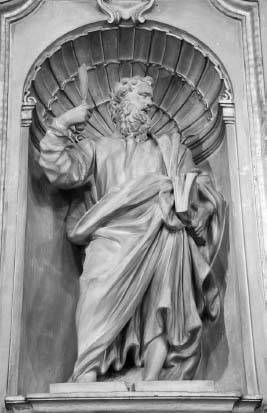ChristianityHistory and Sources |
Why, after Jesus Christ, is Saint Paul considered the most influential teacher in the history of Christianity? |
Paul, whose original name was Saul or Sh’aul, was born in the town of Tarsus, Cilicia (in modern southeastern Turkey), of Jewish parents of the tribe of Benjamin. Both his parents were Roman citizens. It is safe to assume that Paul’s earliest language was Koine Greek, the household language of all educated Roman citizens throughout the empire. Paul was sent at an early age to Jerusalem to attend Bible school. Studying with a famous rabbi, Gamaliel, he learned to write in both Greek and Hebrew and became thoroughly versed in the law. It seems certain that Paul studied in Jerusalem during the three years of Jesus’ public life and that he was present at the time that the Romans crucified Jesus. Paul may even have heard Jesus preach. He certainly must have heard of Jesus and his movement among the people. Apparently, Paul had gained an outstanding reputation as a young rabbinic student because he was authorized to seek out and prosecute members of a new sect who proclaimed that Jesus of Nazareth was the Messiah. Paul apparently made several trips throughout Palestine in search of Christians. On one such trip from Jerusalem to Damascus, in about the year 34 C.E., Paul underwent a conversion.
Four accounts of Paul’s conversion exist (Acts 9:3-19; 22:6-21; 26:12-18; and Galatians 1:12-16). According to the essential spirit of these sources, Paul underwent a supernatural experience in which he came to believe that Jesus was actually the Messiah of Israel and that God had called Paul to preach the message of Jesus to all people. The story adds that he was blinded and forced to fast for three days until a Christian named Ananias laid hands on him and restored his sight, after which he was baptized. The usual date assigned to this event is between 34 and 36 C.E.
During the next fifteen years Paul undertook three extensive journeys in the eastern Mediterranean region, preaching to the Gentiles particularly. Between the beginning of these missionary journeys and his marytrdom in Rome in 66 or 67 C.E., he wrote a number of letters that became part of the Christian New Testament. Paul’s teaching rested on three main principles: Jesus is the Son of God and the Messiah foretold by the prophets of Israel; by his death, Jesus atoned for the sins of all and opened Heaven for humanity; the Mosaic law had, by the fact of Jesus’ death and resurrection, been abrogated and replaced by the Law of Jesus. There was, therefore, no longer any distinction between Jew and Gentile. Paul frequently used texts from the Old Testament to argue his points, interpreting them according to the rabbinic method of exegesis that he had learned in Jerusalem.
As the first systematic theologian and writer of the Christian faith, Paul wielded great influence on such medieval theologians as St. Albertus Magnus, St. Anselm and St. Thomas Aquinas. Paul’s writings also provided the sixteenth-century reformers with their basic ideas. These religious thinkers preferred to return to Paul’s text rather than to adhere to the metaphysical speculations that had developed in Christianity throughout 1,500 years.

St. Paul’s statue at St. Mark’s Church, Florence, Italy.
